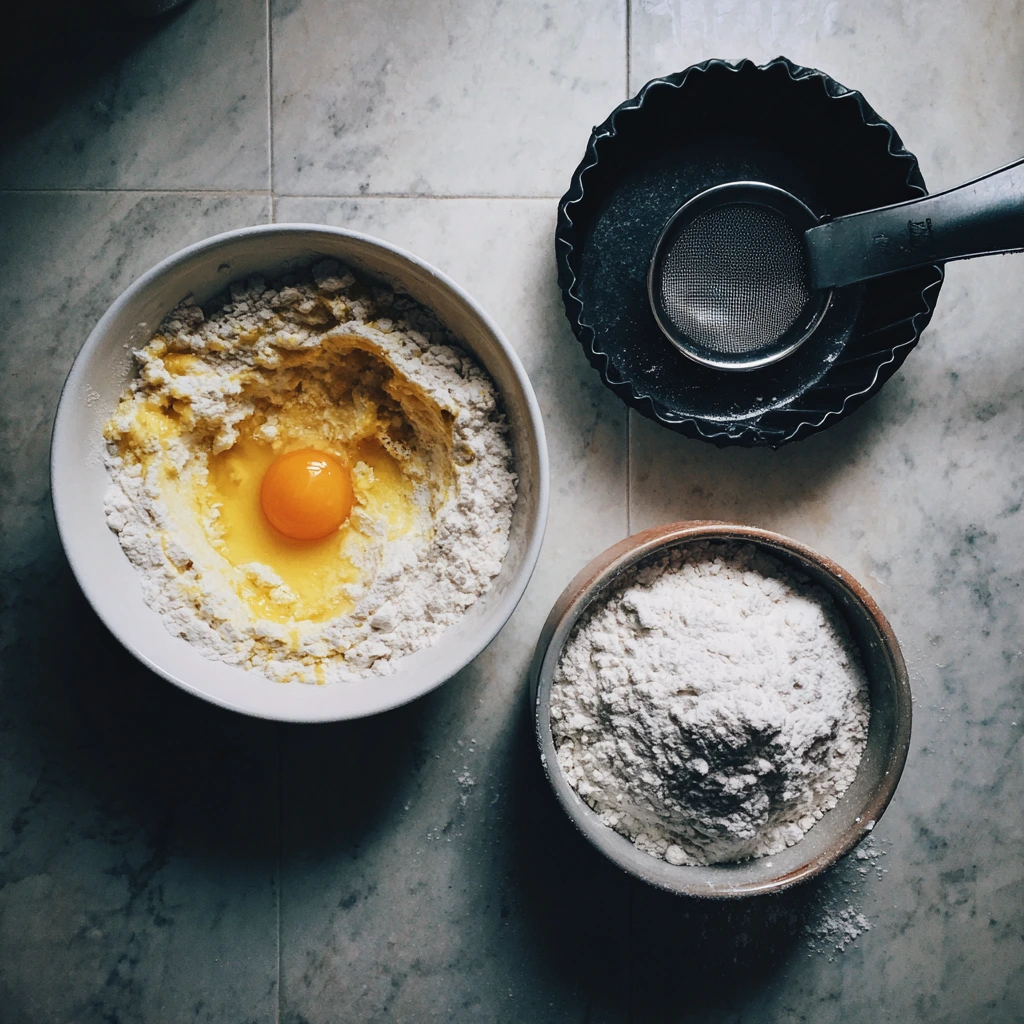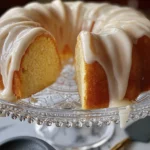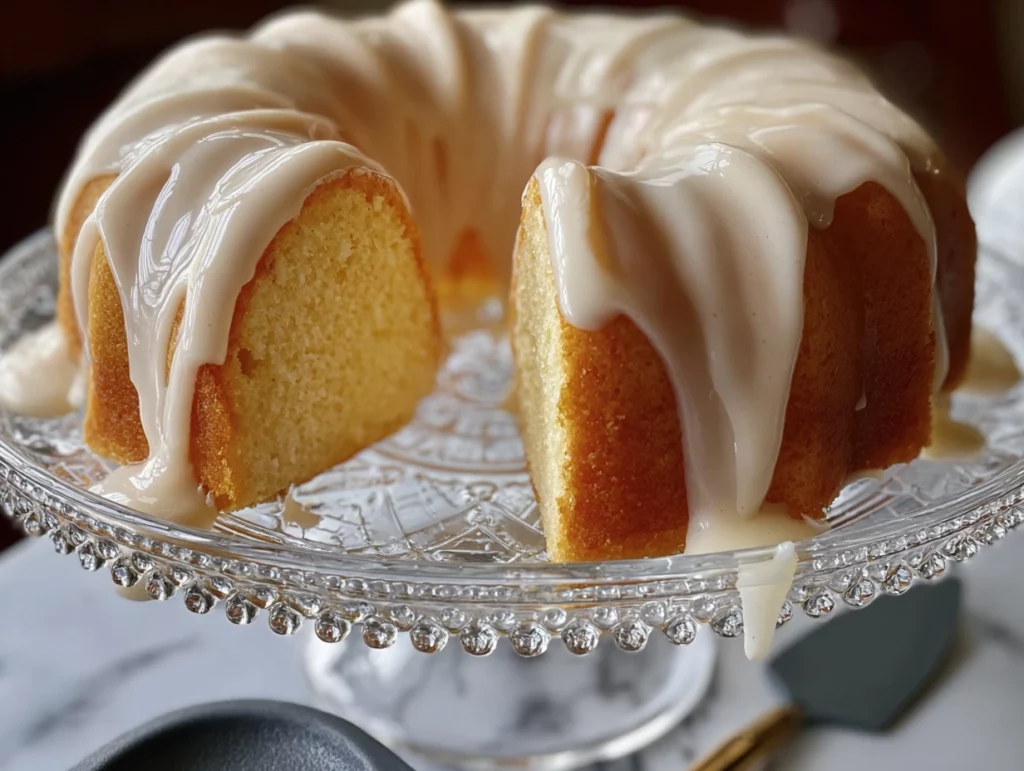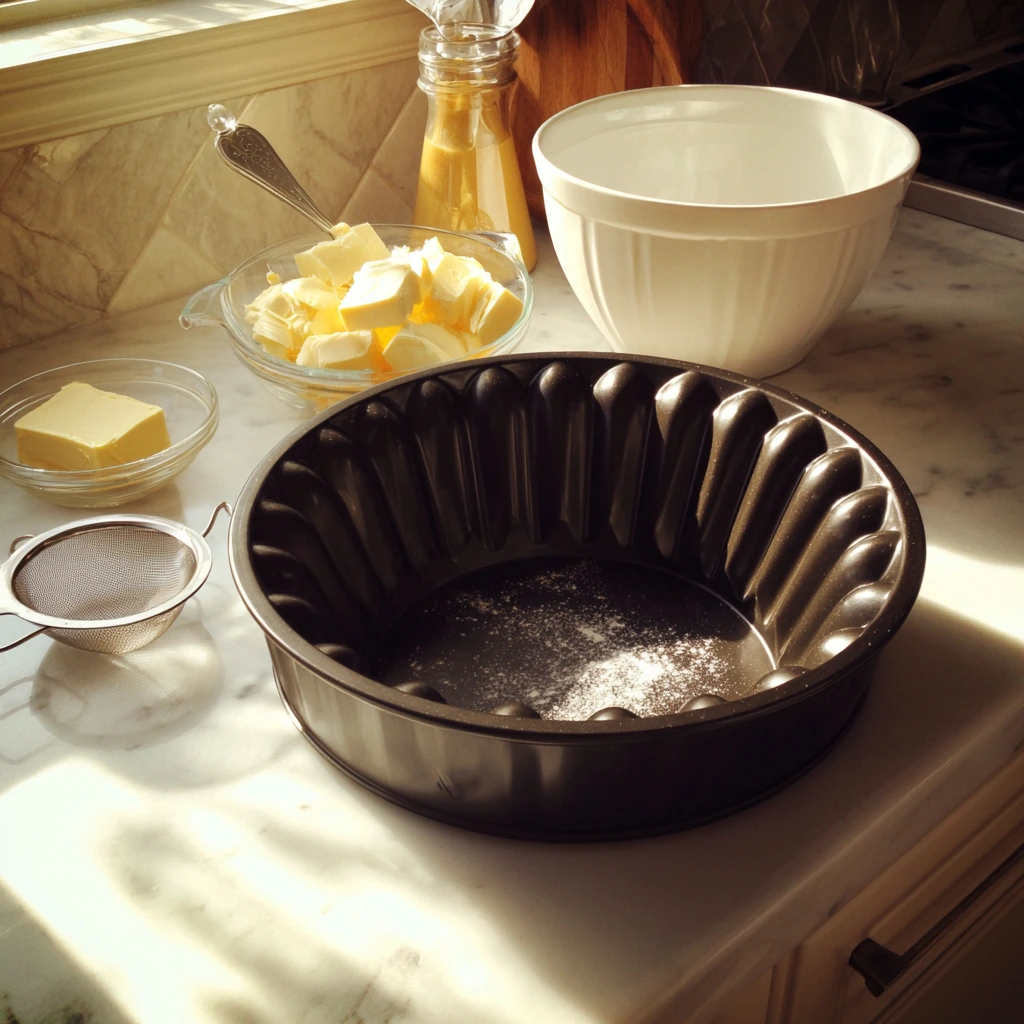If you’re craving a dessert that tastes like comfort and always delivers a perfect crumb, this Slap Ya Momma Pound Cake is it. The name is a playful Southern way of saying “it’s unbelievably good,” and once you slice into that golden crust and see the tender, buttery interior, you’ll get it. This cake is rich without being heavy, sweet without being cloying, and it holds up beautifully to fresh berries, a dollop of whipped cream, or a glossy lemon glaze.
I love this recipe because it’s dependable. With simple pantry staples, a gentle baking temp, and a few technique cues (hello, room-temperature ingredients!), you get consistent results every time. The combination of butter and shortening gives it that classic, tight crumb with a melt-in-your-mouth texture, while a hint of vanilla and lemon brightens the entire cake. It’s the kind of bake that looks impressive on the table but doesn’t ask for fancy skills—just a little patience and the right order of steps.
Before we start, two quick success tips I swear by: make sure all the refrigerated ingredients (eggs and milk) are truly at room temperature, and take a moment to be thorough when prepping your pan. A bundt or tube pan with all those pretty crevices needs a complete coating of grease and flour to release cleanly. Five extra seconds here can save five minutes of cake coaxing later.
Ingredients
3 cups all-purpose flour
3 cups granulated sugar
6 large eggs, room temperature
1 cup unsalted butter, softened
1/2 cup vegetable shortening
1 cup whole milk, room temperature
1 teaspoon baking powder
1 teaspoon salt
1 teaspoon vanilla extract
1 teaspoon lemon extract
Steps
Preheat and Prep the Pan
Preheat your oven to 325°F. Grease and flour a large bundt or tube pan, making sure every crease is covered. Tap out any excess flour. A clean release is key to that beautiful, defined shape.Cream the Fats and Sugar
In a large mixing bowl, beat the butter, shortening, and sugar together on medium speed until light and fluffy—about 5 minutes. Pause once or twice to scrape down the sides and bottom of the bowl. Proper creaming whips in air, which helps the cake rise evenly and gives that signature tight-but-tender crumb.Add Eggs, One at a Time
Add the eggs one by one, mixing well after each addition. You should see the mixture look glossy and slightly thicker as you go. If it starts to look curdled, don’t panic—once the dry ingredients go in, it will come together.Sift the Dry Ingredients
In a separate bowl, sift together the flour, baking powder, and salt. Sifting distributes the baking powder evenly and removes any lumps so the batter blends smoothly without overmixing.Alternate Dry Ingredients with Milk
With the mixer on low, add the dry ingredients in three additions, alternating with the milk in two additions (dry–milk–dry–milk–dry). Begin and end with the flour mixture. Mix just until combined after each addition—no more. Overmixing here can toughen the crumb.Add the Extracts
Stir in the vanilla and lemon extracts until evenly incorporated. The vanilla rounds out the buttery sweetness, while the lemon brings a quiet brightness that keeps each bite from feeling heavy.
Baking, Cooling & Serving Tips
We’ve got our luscious batter ready, and now comes the easy but crucial part—baking it to golden perfection and letting it cool properly. Pound cake has a reputation for being “set it and forget it,” but the truth is, a little attention during the baking and cooling process makes all the difference between a cake that’s good and one that makes people close their eyes with the first bite.
This recipe bakes at a lower temperature (325°F) for a longer time. That’s on purpose—slow baking keeps the crumb even, prevents a dome from forming, and develops that lovely crust without drying out the inside. The toothpick test will be your best friend here, but don’t pull the cake out at the first sign of crumbs. A fully baked pound cake should release the tester cleanly or with just a couple of moist crumbs—no streaks of batter.
Another important point: cooling. As tempting as it is to flip the cake right out of the oven, give it those 10 minutes in the pan. That’s the sweet spot—enough time for the structure to firm up, but not so long that it starts sticking to the pan. After that, invert onto a wire rack and let it cool completely. The flavor actually develops more as it rests, so if you can, bake it a few hours before serving or even the day before.
Now, let’s pick up where we left off.

Fill the Pan
Pour the batter evenly into your prepared bundt or tube pan. Use a spatula to smooth the top so it bakes evenly. The batter will be thick, so take your time to get it into all the nooks and crannies of the pan.Bake Low and Slow
Place the pan on the center rack of your preheated oven. Bake for about 1 hour and 20 minutes, checking at the 1-hour mark. Ovens can vary, so look for a golden-brown top and test with a toothpick in the thickest part—when it comes out clean, it’s done.Cool Before Releasing
Once baked, let the cake rest in the pan for exactly 10 minutes. Set a timer—this step matters. Run a thin spatula or butter knife gently around the edges if needed, then carefully invert onto a wire rack to cool completely.Serve as Is or Dress It Up
You can dust the cooled cake with powdered sugar for a simple, elegant finish. For more flavor, drizzle with a quick lemon glaze made from powdered sugar and fresh lemon juice. Fresh berries and whipped cream also pair beautifully for a summery presentation.
Extra Tips for Success
Go Room Temp All the Way – Butter, eggs, and milk blend more smoothly at room temperature, creating a uniform batter that bakes evenly.
Don’t Rush the Creaming Stage – That 5 minutes of beating butter, shortening, and sugar isn’t just for fun—it’s where the cake gets its light texture.
Mind Your Flour – Measure it correctly by spooning it into the measuring cup and leveling off the top. Too much flour can make the cake dense and dry.
Flavor Tweaks – Swap the lemon extract for almond extract for a nuttier flavor, or add a teaspoon of finely grated citrus zest for more brightness.
Glaze While Slightly Warm – If you’re adding a glaze, pour it over the cake while it’s just barely warm so it soaks in a bit without running off completely.

Let’s wrap this up with the most common questions I get about pound cake—especially this rich, classic Slap Ya Momma version. A few small tweaks and techniques can turn a good cake into a great one, and these quick answers will help you get there confidently.
Q: Why use both butter and shortening?
Butter brings rich, classic flavor and helps with browning. Shortening adds tenderness and a tighter, finer crumb. The combo gives you a buttery taste with that signature, melt-in-your-mouth texture.
Q: Can I use cake flour instead of all-purpose?
Yes. For a slightly softer crumb, you can swap cup-for-cup with cake flour. The structure will be a bit more delicate, so mix gently and avoid overbaking. If you stick with all-purpose (as written), you’ll get a sturdy, classic pound cake texture.
Q: My cake cracked on top—did I do something wrong?
Not at all. Pound cakes often split slightly on top as they expand during a long, low bake. It’s normal and actually a good sign that the inside had room to rise. Once inverted, the “crack” becomes the bottom and won’t show.
Q: How do I know it’s fully baked without drying it out?
Start checking at 60 minutes. Look for a deep golden top and test the thickest part with a toothpick—clean or with a couple of moist crumbs is perfect. If the tester shows wet batter, bake in 5-minute increments and retest. Avoid opening the oven repeatedly early on; check toward the end.
Q: Help—my cake stuck to the pan!
Prepping the pan thoroughly is key. Grease every crevice, dust with flour, and tap out the excess. After baking, cool in the pan for about 10 minutes (not longer), then loosen the edges with a thin spatula and invert onto a wire rack. If it still resists, drape a warm, slightly damp towel over the inverted pan for a minute—steam can help release it.
Q: Can I tweak the flavor?
Absolutely. Keep the vanilla and swap lemon extract for almond extract, or add 1 teaspoon lemon zest or orange zest. For a simple lemon glaze: whisk 1 cup powdered sugar with 1–2 tablespoons fresh lemon juice to your preferred drizzle consistency and pour over the cooled cake.
Q: Can I use buttermilk or sour cream?
Yes. You can replace up to half of the milk with buttermilk or add 1/4 cup sour cream (reduce milk slightly to keep the batter the same thickness). These add tang and extra moisture. Keep the baking powder the same.
Q: How should I store and can I freeze it?
Wrap tightly at room temperature for up to 3 days—flavor improves by day two. For freezing, wrap slices or the whole cooled cake in plastic wrap, then foil. Freeze up to 2 months. Thaw wrapped at room temp to keep moisture in.
Q: Can I bake this in loaf pans instead of a bundt?
Yes. Divide the batter between two well-greased and floured 9×5-inch loaf pans. Bake at 325°F for about 55–70 minutes, checking early and often. The same doneness cues apply.
Q: Why are room-temperature ingredients so important here?
They emulsify better, which means a smoother batter, more even rise, and a fine, tender crumb. Cold ingredients can lead to curdling and uneven texture.
Final Thoughts: Make It, Share It, Love It
This Slap Ya Momma Pound Cake is everything you want in a classic Southern dessert—rich, buttery, and impossibly tender, with a golden crust that makes each slice feel special. The method is straightforward: cream well, alternate the dry and wet ingredients gently, bake low and slow, and give it that brief rest before releasing from the pan. From there, decide how to serve it. Keep it simple with a dusting of powdered sugar, add brightness with a quick lemon glaze, or go all out with fresh berries and softly whipped cream.
If you try flavor twists—almond extract, citrus zest, or a vanilla bean—let me know what you loved most. And if you bake it ahead, don’t be surprised when the next-day slice tastes even better. That’s the magic of a great pound cake: it only gets more delicious as it rests.
Print
Slap Ya Momma Pound Cake
- Author: Andrew Recipes
Description
This rich, buttery pound cake is so soft and moist that every bite feels like a warm hug from home. With a dense yet tender crumb and a flavor that’s perfectly balanced between sweet and buttery, this cake is a classic Southern favorite that pairs beautifully with fresh fruit, whipped cream, or a drizzle of glaze. Perfect for Sunday dinners, holiday gatherings, or anytime you want a dessert that will have everyone asking for seconds.
Ingredients
3 cups all-purpose flour
3 cups granulated sugar
6 large eggs, room temperature
1 cup unsalted butter, softened
1/2 cup vegetable shortening
1 cup whole milk, room temperature
1 teaspoon baking powder
1 teaspoon salt
1 teaspoon vanilla extract
1 teaspoon lemon extract
Instructions
Preheat your oven to 325°F. Grease and flour a large bundt pan or tube pan, making sure all crevices are coated.
In a large mixing bowl, cream together the butter, shortening, and sugar until light and fluffy, about 5 minutes.
Add the eggs one at a time, mixing well after each addition.
In a separate bowl, sift together the flour, baking powder, and salt.
Gradually add the dry ingredients to the creamed mixture, alternating with the milk, beginning and ending with the flour mixture. Mix until just combined.
Stir in the vanilla and lemon extracts until evenly incorporated.
Pour the batter into the prepared pan, spreading evenly.
Bake for 1 hour and 20 minutes, or until a toothpick inserted in the center comes out clean.
Let the cake cool in the pan for 10 minutes before inverting onto a wire rack to cool completely.
Notes
For extra flavor, you can dust the finished cake with powdered sugar or drizzle with a simple lemon glaze.
Make sure your ingredients are at room temperature to achieve the best texture.
This cake keeps well for several days if wrapped tightly, and it tastes even better the next day as the flavors deepen.



